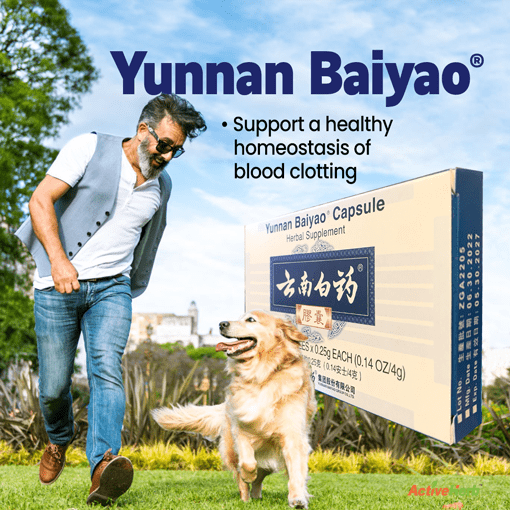TCM For Pets: A Modern Adaptation Or An Ancient Practice?

Close your eyes and imagine an ancient Chinese village. Among the hustle of farmers working their fields, pigs grunt and chickens scurry around in search of food. A farmer gently guides an ox through a rice paddy while another tends to goats in a thatched barn. Scruffy and utilitarian dogs wander freely, herding animals or guarding the home, and cats slink quietly in the background, keeping mice at bay. In this scene, animals have their role. But you wouldn’t find a well-groomed poodle adorned with a sparkling purple sequin collar napping on a silk cushion.
Were animals considered beloved companions? Or were they merely functional contributors to daily life? Did the ancients treat village animals with TCM, or is this more of a modern phenomenon?
Were Pets Pampered in Ancient China?
The market for veterinary care and Traditional Chinese Medicine (TCM) for pets is growing significantly, particularly in China. The overall companion animal health market in China was valued at slightly over $1 billion in 2021. The market is expected to grow at a compound annual growth rate (CAGR) of 11.3%, reaching over $2 billion by 2028. This growth is driven by the increasing number of pet owners, particularly among the younger, more affluent urban population, and a rising demand for natural and holistic treatments, including herbal therapies.
But how did ancient society view pets in China? If farm animals like oxen were sick, did villagers nurse them back to health? And what about small four-legged creatures? Were they doted on if their health seemed out of balance?
While it’s true that pets in ancient China were not pampered the way we spoil our pets today, historical records suggest animals had significant roles beyond work. Dogs, for example, were companions, protectors, and even spiritual symbols, often depicted alongside deities. Cats were cherished for their ability to ward off evil and protect food stores. Though the concept of a pet as a family member may have differed from our modern understanding, animals were undoubtedly cared for, and their well-being was of concern. Ancient texts reveal that the Chinese didn’t simply let their animals suffer from illness—they used natural remedies, particularly herbs, to treat them.
The History of Using Chinese Herbs for Pets
Ancient medical texts document the use of Chinese herbs for animals, including the Bencao Gangmu (Compendium of Materia Medica), the most complete and comprehensive medical book ever written in the history of traditional Chinese medicine. This compendium includes references to animal treatment, mentioning herbs like Huang Lian (Coptis root) for gastrointestinal issues in dogs and Huang Qi (Astragalus root) to boost vitality.
This suggests that there is indeed a long history of using Chinese herbs to improve the health of household animals, even if they weren’t pampered at the pet spa or spoiled with toys and catnip.
Common Ailments Treated and Herbs Used For Pets
Ancient Chinese farmers and healers treated their animals for a range of common ailments using herbs. The most common issues involved digestion, infections, and overall weakness or fatigue.
Digestive Issues
Dogs were given herbs such as Huang Lian (Coptis root) to treat diarrhea or vomiting. Another common herb for indigestion was Ji Nei Jin (extract), aka chicken gizzard lining. (Learn more about this curious TCM ingredient here.)
Respiratory Issues
As with humans, for respiratory problems, herbs like Gan Cao (Licorice root) were given to pets. Even though cats are low maintenance in comparison to dogs, felines are notorious for developing respiratory infections. Xiao Qing Long Tang (Minor Blue Dragon Formula) was sometimes used. A 2022 meta-analysis of clinical trials on the formula in the Journal of Ethnopharmacology supports the ancient practice of this formula for respiratory function.
Infections and Parasites
Despite the sanitary conditions we enjoy in the developed world, parasites are still an issue for pets. Centuries ago, the go-to herb for wounds and skin problems in pets was Bai Hua She She Cao (Oldenlandia). A study in a Chinese integrative medicine journal supports the herb for cellular metabolism. As for parasites, Wu Mei (Mume fruit) was often given to ward off intestinal parasites. Research from a 2022 animal study in the Journal of Medicinal Food supports the herb’s effects on the inflammatory process.
Vitality and Strength
Huang Qi (Astragalus) was administered to animals to restore energy and strengthen weak animals from illness or overwork.
How Were Chinese Herbs Administered to Pets?
Traditionally, herbs were boiled into decoctions and mixed with the animal’s food or water. Sometimes, the herbs were ground into powders and added directly to food. The practicality of administration depended on the animal—farmers would find ways to disguise the herbs in a way the animals would consume, not much different than how modern dog owners sneak a heartworm pill into a scoop of peanut butter. Large livestock might have their herbal remedies mixed into feed, while smaller animals, like dogs or cats, were given herbs in more diluted forms or as a broth.
Considerations for Giving Herbs to Pets
Administering Chinese herbs to pets requires careful consideration, particularly with dosage. Just as in humans, the strength of the herb’s properties mattered. Ancient texts advised healers to carefully monitor the animal’s response and adjust accordingly. Today, veterinarians specializing in Traditional Chinese Medicine (TCM) for animals have spawned a new industry: TCVM, Traditional Chinese Veterinary Medicine. Vets who employ TCM in their practice often modify dosages from human recommendations based on the species, the weight of the animal, and the animal’s specific needs.
Does Research Support TCM for Pets?
Modern research is beginning to validate the ancient practice of using herbs to support pet health. One study from 2023 published in Veterinary Medicine and Science explored the use of Huang Qi in male dogs (beagles, to be exact) after castration and found that two weeks after the surgery, a diet supplemented with the Chinese herb decreased weight gain and supported wound healing and the immune response.
A 2016 research study from a veterinary journal supports another post-surgical Chinese medicine for pets: Yunnan Baiyao. The co-authors of the paper, researchers at the University of Florida’s Department of Small Animal Clinical Sciences, write, “Yunnan Baiyao has been utilized in the veterinary profession to control bleeding in dogs…and has been anecdotally reported to prolong survival times.”
There are hundreds of anecdotal reports that Yunnan Baiyao helps dogs suffering from trauma, including internal bleeding. However, robust research studies are necessary to validate these claims. Though it has a long history of use in humans, Yunnan Baiyao has become a trusted herbal remedy for pets.
Other Forms of TCM for Pets
In addition to herbs, other forms of Traditional Chinese Medicine, such as acupuncture and acupressure, are becoming increasingly popular for pets. Acupuncture, in particular, has been shown to alleviate pain and improve mobility in animals. By incorporating Chinese herbs and other TCM therapies, we can enhance the well-being of our pets, providing them with natural solutions rooted in ancient wisdom.
Do you use TCM for pets? Leave a comment.







